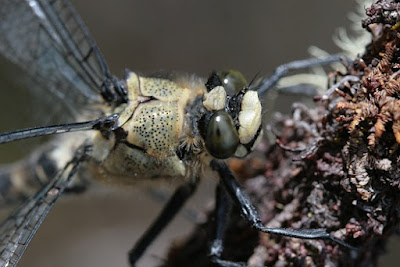Why do birds’ eggs (or any eggs, for that matter) vary in shape?
At least one very intuitive shape exists. Murres, an alcid (the same family as puffins), lay very pointed eggs that roll in circles, which is important as to avoid the eggs rolling off the small ledges on cliffs that they lay the eggs on, without the protection of a nest. But most birds build nests and avoid that problem.
 |
| Rock cormorants, not murres, but the same nesting situation |
Important to all eggs is the amount of surface area/volume – a ratio that you may remember from cells, but is important at all levels of biology. Insects are limited in size by this ratio – that is why a walking stick might be 6” long, but no insect is 6” wide. Bird eggs, like everything living, respire and the eggshell, though it might seem solid, is actually somewhat permeable and while an egg needs to exchange gasses, it does not want to lose too much water – as it is laid with all the water it needs, but very little extra. Scientists have predicted that, if this is the only important factor, all eggs should be round as this is the lowest SA:V. Add to this that round eggs are the strongest and you might think all eggs would be round. But they aren't.
 |
| Eared Dove nest, Chascomus, Argentina |
The shape seems influenced by the female reproductive tract of the particular bird, and this probably accounts for egg shape variation between species. But bear in mind this is a proximate cause – i.e. the egg shape is determined by this, but ultimately, the shape given is the result of evolution of the reproductive tract. But then why do eggs differ perceptively in shape between members of the same species, or even more puzzlingly, between the same female?
These three eggs are all of Tachycineta stolzmanni, the Tumbes Swallow, lit to illuminate yolk area.
An interesting idea has been floating around since the 1940’s. Shape might have to do with how effectively eggs can fit under the incubating bird. Most female birds (and some males) possess a “brood patch” (or several), an area of skin with very good blood supply which, during the breeding season, is featherless and used to heat the eggs. Perhaps the best shape of eggs is one that the most eggs can fit under the brood patch. This model, most recently simulated by Barta and Szekely in 1997, predicts differently shaped eggs for different numbers of eggs and shapes of brood patches. Their predictions are somewhat borne out by observational data – birds that lay one, or many, eggs generally have rounder eggs and ones that have four eggs generally fit together very tightly with their tips pointed in.
 |
| Penguins are one of the only groups of birds without a brood patch, they have a pouch formed by the skin. |
But look at any dozen eggs you get from a grocery store and you can see an exception to this. These are all different shapes and chickens are indeterminate layers, meaning that they can lay many eggs (and the number is not known to the chicken when she begins, thus how does she compensate for shape?), and if you keep taking eggs from a chicken, the chicken keeps laying them. And yet shape differences persist in the species. A study of Blackbirds and Great Tits in Spain showed that shape and clutch size were independent, another thorn in the side of this prediction.
 |
| Rufous-collared Sparrow and nest |
Perhaps small differences in shape have no functional difference and thus selection wouldn’t operate on them. An entirely plausible, and possible, solution and perhaps a really pointed or perfectly round egg might be disadvantageous, but all the variation between two points is similar. But before deciding this, bear in mind the Grant’s finches (dealt with wonderfully in Jonathan Weiner’s book The Beak of the Finch), where a millimeter of beak difference, barely perceptible to an observer, meant life or death for the finches. It seems likely that some other force, or some combination of the discussed forces, determines the shape of a bird’s egg.


















































